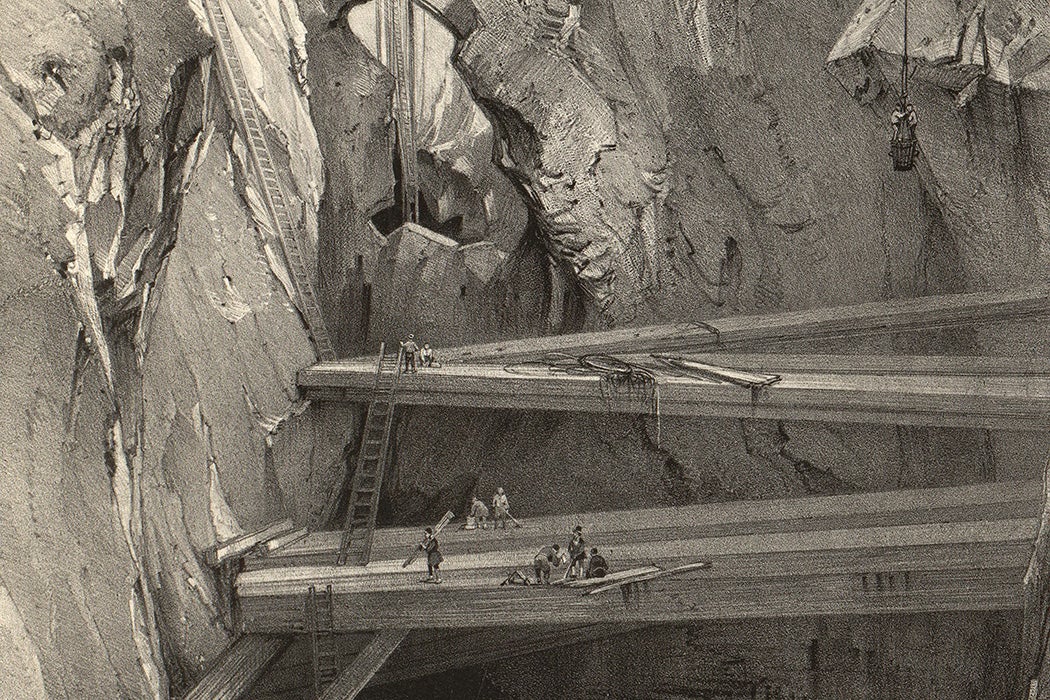When it started in the late 1400s, trade between Europe and West Africa was relatively benign. Europeans were interested in “gold, ivory, pepper, precious woods, and other high value commodities,” write historians Chris Evans and Göran Rydén. These were traded for “imported currencies, most notably cowries, or metals [iron and copper] that could act as both currency and producer good.” But from the late seventeenth century, the “Atlantic trade took a destructive turn.”
“European traders were no longer focused on precious things for Old World markets,” Evans and Rydén write. “[T]hey require captives who could labour on New World plantations. The consequences were catastrophic.” Slave-trading “stimulated warlordism, a contraction of market activity, de-urbanization and de-population.” A growing market emphasis on consumer goods and weapons “signalled the relentless spread of slave-raiding and the erosion of West Africa’s own manufacturing capacity.”
One of the things Portuguese, Dutch, British, French, and other slavers traded for human beings were malleable bars of “voyage iron.” These iron bars “acted as specie,” embodying exchange value (like a currency) as well as use value—they could be locally smithed into tools and weapons.
Evans and Rydén give examples of the amount of voyage iron involved in the slave trade. In 1707–1708, the Royal African Company, the English chartered corporation, was committed to keeping a minimum stock of 1,000 tons of iron on the West African Coast for trading purposes: about 176 tons for Upper Guinea, 865 tons for the Gold Coast, and an unspecified amount for the Bight of Benin. The numbers could be erratic. In 1732–33, a Bristol iron dealer sold 148 tons of voyage iron to slave traders. Five years later, in his best year, he moved 616 tons. In the 1760s, some 367 European slaving voyages landed 420 tons of iron annually at the Bight of Biafra, according to Evans and Rydén’s estimates. By European standards, this wasn’t a lot of iron, but by coastal West African standards, it certainly was.
Along that coast, the tropical forest climate inhibited iron-smelting. In drier savannah woodlands further inland, there was a thriving metallurgical tradition, producing exemplary iron admired by European travelers. Evans and Rydén call the influx of tons of European iron into the “iron-hungry” coast “hugely significant,” resulting in a “profound impact on West Africa.”
The introduced iron “underpinned an agro-environmental transformation of coastal Africa from Senegambia to Biafra,” they write. New World crops like cassava, beans, and corn (maize) sparked an “agricultural carbohydrate revolution” on land opened to farming by iron tools used to clear the forest. The “repeated sales of iron, humdrum in themselves, thus contributed to an epochal re-orientation of West African societies and economies.” The resulting population growth helped “sustain the export of enslaved people.”
One consequential result was “a shift in the center of social gravity,” Evans and Rydén write. The weight of politics and trade moved
away from the city states and empires of the interior, and away from the trans-Saharan caravan trade that had for centuries linked them to the Mediterranean world. The Atlantic now exerted a gravitational pull it had previously lacked.
The authors note that the major slaving countries of Europe were themselves net importers of iron. Sweden, which usually gets little mention in histories of the Atlantic slave trade, was a primary exporter of iron to the rest of Europe. That included the “bespoke product” that was voyage iron, made to order for British slavers who then took it to Africa. Voyage iron had to be high quality, highly finished and made to exacting, and often changing, dimensions demanded by African traders. (Europe’s biggest iron producer, Russia’s Ural region, was too far from the sources of information about what was in demand.)
Weekly Newsletter
“The intensification of the slave trade in the eighteenth century deepened the demand for voyage iron,” write Evans and Rydén. Although European muskets played a big role in slave-raiding, iron was needed for the “spears, blades, and arrowheads” also used in captive-taking—and for potential captives to defend themselves. “Voyage iron, it might be said, helped to create its own demand.” This “iron-slave cycle” was an expanding cycle of violence. The resulting transformations and destabilizations helped lay the groundwork for the next chapter of European interest in Africa: colonization.
“West Africa’s seaborne connections to Europe began in the fifteenth century with an outflow of gold,” Evans and Rydén conclude, “but, with regard to African agriculture and handicrafts in the precolonial period, the influx of a base metal may have been more consequential.”
Teaching Tips
- Read the authors’ analysis of the “archival odyssey” they took while writing the article discussed above.
- Discuss the transformation of the West African coast, placing it in a larger environmental context using Louise Iles’s analysis of the connection between metallurgy and global forests.
- Take a virtual field trip to the art exhibition Striking Iron: The Art of African Blacksmiths courtesy of the National Museum of African Art.







